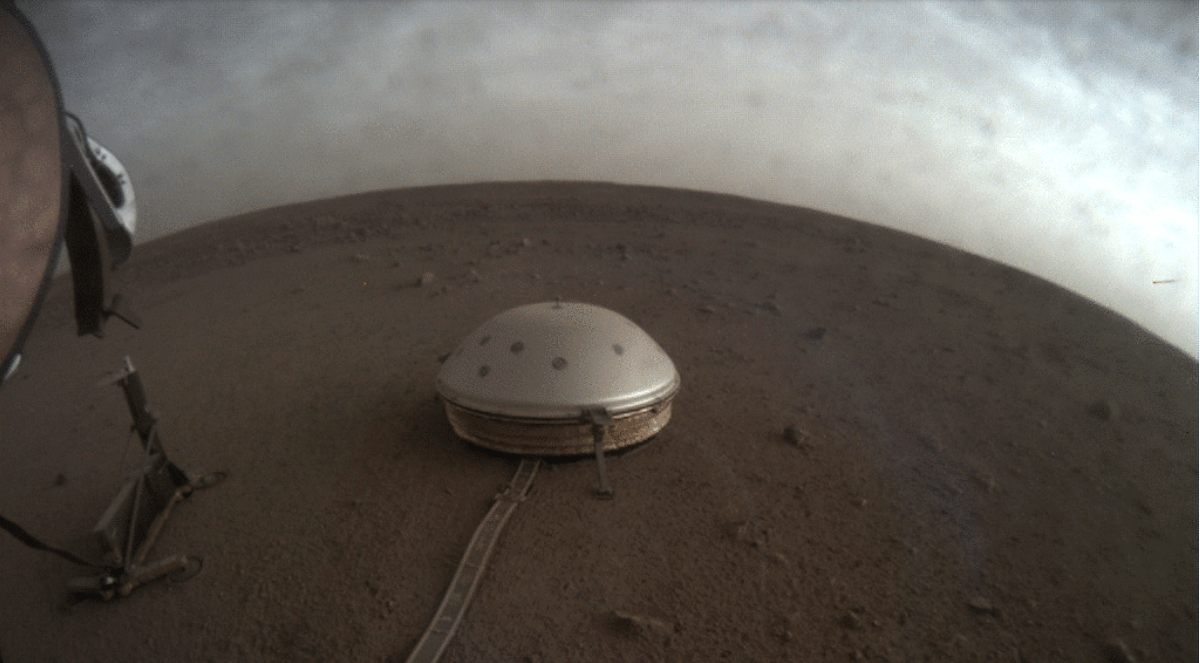The SEIS (Seismic Experiment for Interior Structure) instrument on NASA’s InSight lander has sensed 21 Marsquakes since it was deployed on December 19th, 2018. It actually sensed over 100 events to date, but only 21 of them have been identified as Marsquakes. SEIS is extremely sensitive so mission scientists expected these results.
SEIS is a key part of InSight, NASA’s mission to understand the interior of Mars. Along with other instruments, it’ll help scientists understand what’s going on inside Mars.
SEIS listens for Marsquakes, then measures how they travel through the planet, uncovering clues to the physical nature of Mars’ interior. Other missions to Mars have studied the physical characteristics of Mars’ surface, but InSight is the first mission designed to understand Mars’ interior, and hopefully provide some clues to how the planet formed.
SEIS had an unproductive start. After being deployed in December 2018, it heard only silence for months. Then in April it sensed a very weak seismic signal. It heard other signals before that, but they were external, caused by wind. This was the first Marsquake.
Now NASA has released recordings of two more Marsquakes. The frequency of the actual quakes is far too low for human hearing, so they’ve been sped up. The first one, Sol 173, is a magnitude 3.7, and the second one, Sol 235, is magnitude 3.3.
The quakes are not much more than subtle rumbles to our ears. But they tell scientists something about the interior of Mars. The quakes suggest that the Martian crust is a little like the Earth and a little like the Moon. On both bodies, cracks appear in the crust. On Earth, they’re eventually filled with water and minerals, allowing sound-waves to travel through them in a straight line. But on the Moon, those cracks and fractures remain. That means sound-waves are scattered for tens of minutes after they’re initiated.
NASA says that Mars is slightly more Moon-like than Earth. Marsquakes can ring for a minute or so, while on Earth they’re gone in seconds.
SEIS needs to be a great listener to hear Marsquakes. Even though its protective dome shields it from wind noise, mission scientists have to diligently filter out noise to hear the true Marsquakes. Over time, they’ve gotten better at this.
“It’s been exciting, especially in the beginning, hearing the first vibrations from the lander,” said Constantinos Charalambous, an InSight science team member at Imperial College London who works with the SP sensors. “You’re imagining what’s really happening on Mars as InSight sits on the open landscape.”
There are a variety of extraneous sounds that need to be filtered out in order to find true Marsquakes. As the lander’s robotic arm moves around and aims the camera, it produces noises. And even though SEIS’s protective dome is working as intended, some wind noise still gets through, especially during the day, when warming produces more air movement. There are also what the team calls “dinks” and “donks,” the tell-tale sound that metal equipment and machinery makes as it cools and contracts.
But overall, the team says that twilight is the best time to listen for Marsquakes. Winds have calmed and metal has stopped contracting, and the robotic arm’s camera isn’t as active.
Unfortunately, one of InSight’s other important instruments, the Heat Flow and Physical Properties Package (HP3) is not producing results. The HP3, or “mole” is designed to hammer its way into the ground on Mars and measure heat as it flows out of the planet’s interior. It’s supposed to get to a depth of 5 meters, but it’s stuck. It only made it 12 inches deep, and mission scientists are trying to figure out a solution.
The InSight Lander mission is managed by the Jet Propulsion Laboratory. International Partners contributed to the mission. SEIS was designed and built by France’s Centre National d’Études Spatiales (CNES).
More:
- Universe Today: NASA’s Still Trying to Get InSight’s Mole Working Again. Progress is Slow.
- Press Release: NASA’s InSight ‘Hears’ Peculiar Sounds on Mars
- Press Release: NASA’s InSight Detects First Likely ‘Quake’ on Mars
- NASA: InSight Mission

